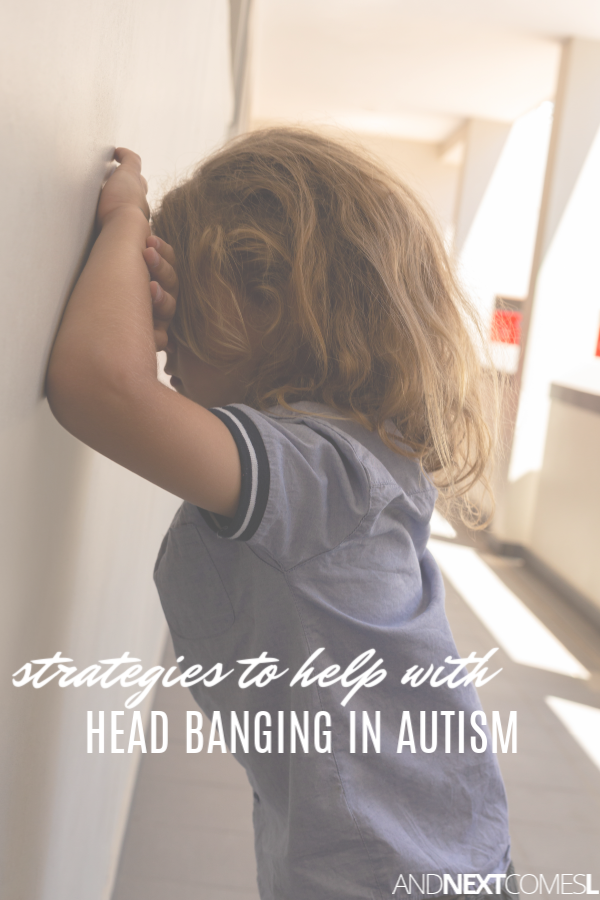Head banging or hitting is a common self-injurious behavior in autism. Here's how to help with head banging in autism.
A common self-injurious behavior in autism is head banging or head hitting.
And we're not talking about the hair-swirling, mosh pit, rocking out to hardcore music type of head banging.
We're talking about the behavior where kids are purposely slamming their heads against walls or floors or furniture.
The type of head banging that is dangerous. The kind that makes you worry about whether or not your child is causing long-lasting damage to their head and brain.
You ask yourself regularly, What can I do about my head banging child?
First you should try and determine what the reason for the head banging behavior is. Then you can implement one (or all) of these 15+ strategies to help with head banging in autism.
Autism & Head Banging: 15+ Strategies to Help
Obviously it's difficult to watch your child engage in self-injurious behavior like head banging, but thankfully, there's lots of things you can do to try and help, especially once you've narrowed down the possible reasons for the head banging. I've grouped them into five broad categories.
Provide sensory alternatives
If you have determined that the root cause of your child's head banging is sensory processing related, then you can try the following strategies.- Provide frequent deep pressure to the head
- Hang upside down or invert the head
- Do head stands (help your child do this safely and with your help)
- Engage in some vestibular activities like swinging or rocking in a chair
- Engage in a proprioceptive sensory activity (e.g., jumping on a trampoline, hopping on a hopper ball, etc.)
- Have a pillow fight
Safeguard the environment
If your child is banging their head as a way to remove pain or discomfort, then you might need to consider safeguarding the environment. Here are some things you could try:- Remove any sharp or dangerous objects from the house where they typically engage in head banging behaviors
- Add padding or protective strips to areas where they typically bang, especially sharp corners
- Offer safe alternatives for them to crash their bodies (e.g., a pile of pillows, a crash mat, or bed)
- Invest in a soft helmet for them to wear
- Put up visual supports (e.g., a stop sign) where they might normally engage in head banging behavior
Determine patterns
Not sure why your child is banging their head yet? Or are you having trouble pin pointing the why behind the behavior? Here is what you can do to help:- Track head banging behaviors so that you can identify triggers
- Determine what might be the main reason for the head banging behavior
Teach self-regulation or coping strategies
Remember that your child's head banging could be their way of communicating how they are feeling. You might find it helpful to teach them emotional self-regulation and coping skills so that they can find alternative ways to express their emotions.- Use social stories to teach about safety skills like why head banging is dangerous
- Use visual supports to help your child communicate their emotions
Seek outside help
Finally, it's always important to reach out for additional help when needed!- Book a doctor's appointment to rule out any medical issues that are causing your child pain or discomfort
Other Safety Resources You'll Love
How to Teach Safety Skills to Kids with Autism or Hyperlexia
Free Printable Social Story About Crossing the Street
Autism & Head Banging: 5 Reasons Why it's Happening
Free Printable Social Story About Crossing the Street
Autism & Head Banging: 5 Reasons Why it's Happening



